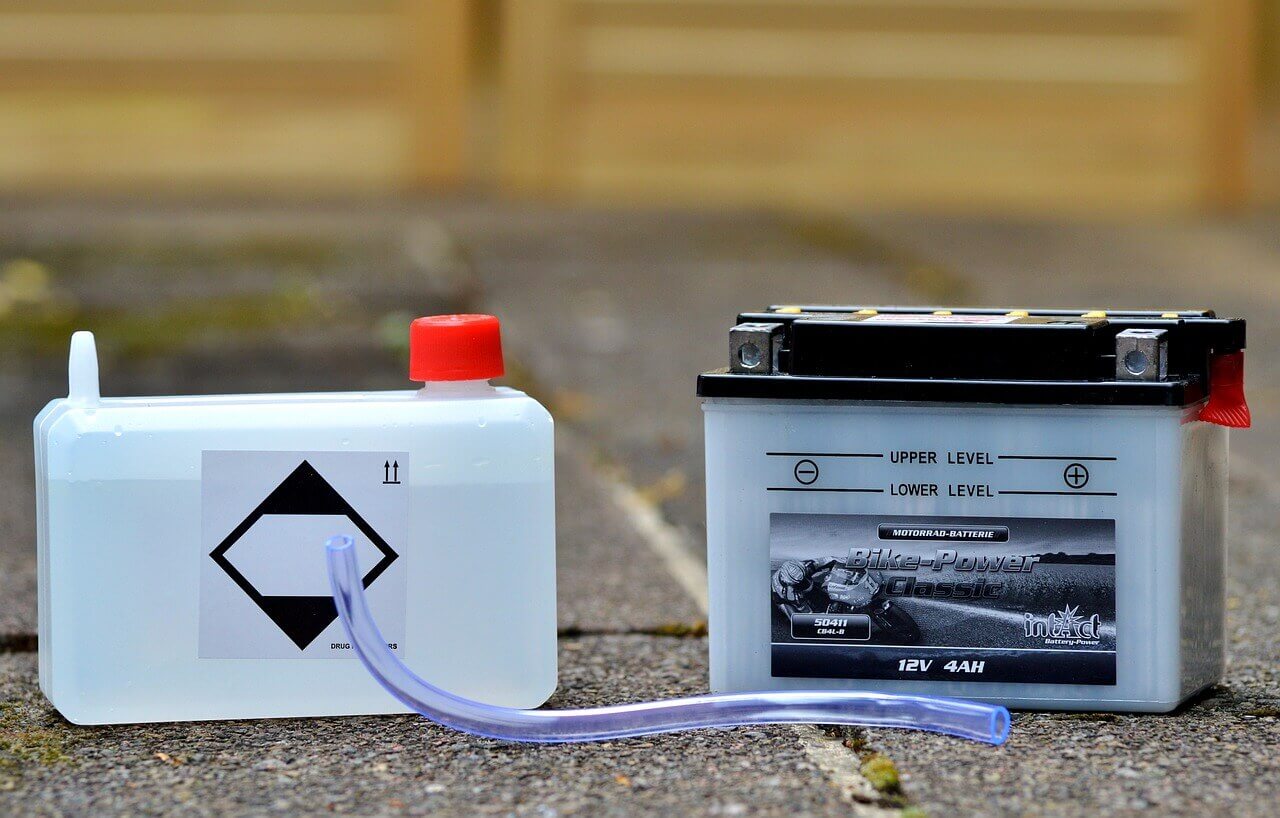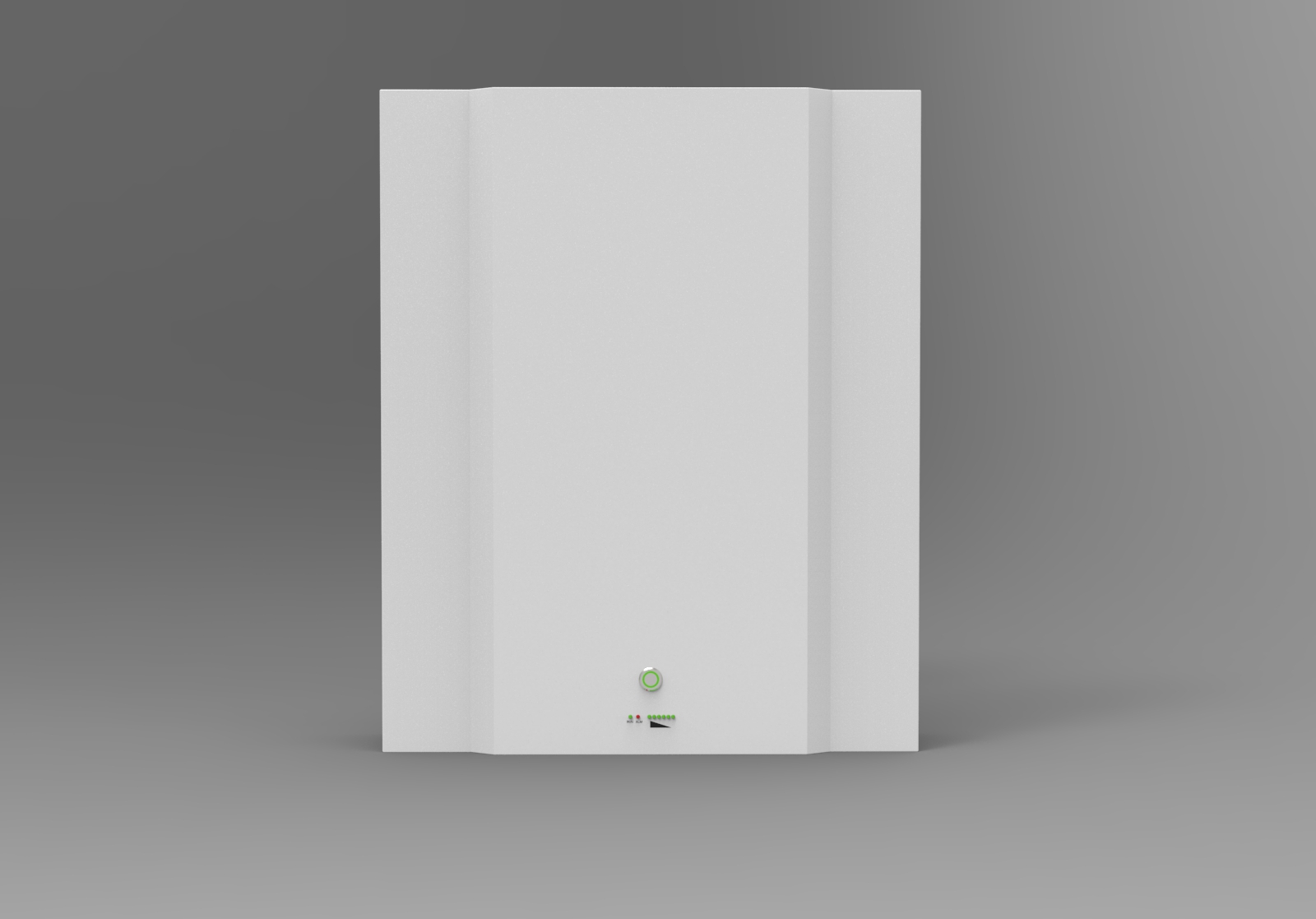Lifepo4 Battery VS Lead Acid - Choose the Best for Your Need

Are you feeling overwhelmed by the different batteries available on the market and unsure which one is right for you? We’re here to help. Let's compare two of the most popular battery options: LiFePO4 battery vs lead acid battery.
This blog post will highlight key differences, pros, and cons between these two types of batteries so that you can make an informed decision about which option best meets your needs.
At last, whether your goal is maximum power for a High-Performance Electric Vehicle or enhanced reliability and safety for storing solar energy in off-grid systems, we'll provide insight into why each type might be better suited to meet those requirements.
What is The Lifepo4 Battery?
The lifepo4 battery is a type of Lithium-ion battery and belongs to the category of rechargeable batteries. It is made with Phosphate as its cathode material, which makes lifepo4 extremely safe and incredibly stable.
With the advancement of lifepo4 technology, lifepo4 battery is becoming more and more popular due to their higher energy density, higher safety level and longer life cycle than traditional lithium-ion batteries.
Such as the operation of electrodes, higher operating temperature, thinner form factor brings ideal characteristics, as well as better low-temperature voltage stability, improved power application capability, lower self-discharge rate and fewer environmental concerns. The lifepo4 battery is expected to continue to provide reliable performance for various applications in the coming years.
What is The Lead-Acid Battery?
A lead-acid battery is a battery whose electrodes are mainly made of lead and its oxides, and the electrolyte is a sulfuric acid solution.
Its working principle is that the anode (PbO2) and cathode (Pb) in the lead battery are immersed in the electrolyte (dilute sulfuric acid), a 2V power is generated between the two poles.
The chemical change in the discharge is that the dilute sulfuric acid will react with the active substances on the cathode and anode plates to generate a new compound "lead sulfate". The sulfuric acid component is released from the electrolyte through discharge, and the longer the discharge, the thinner the concentration of sulfuric acid.
The French Plante invented lead-acid batteries in 1859, and has experienced nearly 150 years of development. With the development of technology, lead-acid batteries have gradually expanded into various types of deep-cycle batteries in the application.
Flooded Lead Acid
The sulfuric acid in the electrolyte of the lead-acid battery directly participates in the charging and discharging reaction process of the battery. In the traditional lead-acid battery, the remaining space in the battery tank after removing the plate, separator and other solid assembly parts is completely filled with sulfuric acid electrolyte, and the electrolyte is in surplus.
Excessive state, so it is called "flooded" battery, the battery plate is completely immersed in the sulfuric acid electrolyte.
There is a cover on the top of the flooded battery that can ventilate and prevent liquid from splashing (but it cannot completely prevent liquid leakage). During use, due to the loss of water evaporation and decomposition, it is necessary to open the cover regularly to add distilled water and adjust the electrolysis. Liquid density, so it is customarily called "open type" battery.
Advantage:
- Cheap.

Sealed Lead acid - AGM Battery
The AGM battery uses pure sulfuric acid aqueous solution as the electrolyte, and its density is 1.29-1.3lg/cm3. Most of it exists in the glass fiber membrane, while a part of the electrolyte is absorbed inside the plate.
In order to provide a channel for the oxygen precipitated from the positive electrode to the negative electrode, it is necessary to keep 10% of the pores of the diaphragm not occupied by the electrolyte, that is, the lean liquid design.
Advantages:
- The cycle charging capacity is 3 times higher than that of lead-calcium batteries and has a longer service life.
- Higher capacitance stability throughout the life cycle.
- Low-temperature performance is more reliable.
- Reduce the risk of accidents and reduce the risk of environmental pollution (because the acid is 100% sealed)
- Maintenance is very simple, reducing deep discharge.
Sealed lead acid - GEL battery
Colloidal sealed lead-acid battery (also known as GEL type battery), its electrolyte is made of silica sol and sulfuric acid, the concentration of the sulfuric acid solution is lower than that of AGM type battery, usually 1.26 ~ 1.28g/cm3. The amount of electrolyte is 20% more than that of AGM batteries, which is equivalent to that of flooded batteries.
This electrolyte exists in a colloidal state and is filled in the separator and between the positive and negative electrodes. The sulfuric acid electrolyte is surrounded by gel and will not flow out of the battery.
Advantages:
- GEL battery has no free electrolyte after the electrolyte gel, and the probability of acid leakage is much smaller than that of the previous battery.
- Its perfusion volume is 10-15% more than that of dilute sulfuric acid, and the water loss is less, so the colloidal battery will not fail due to water loss.
- The injection of colloid increases the strength of the separator, protects the plate, and makes up for the defect of the separator shrinking when it encounters acid, so that the assembly pressure does not decrease significantly, which is one of the reasons for extending the battery life.
- Colloid The gap between the separator and the pole plate is filled, the internal resistance of the battery is reduced, and the charge acceptance can be improved accordingly. Therefore, the over-discharge, recovery ability and low-temperature charge-discharge performance of gel batteries are superior to those of AGM batteries.
- The consistency of gel batteries is much better than similar AGM batteries.
Lifepo4 Battery VS Lead-acid Battery
As the first lithium-ion battery in 1997, the lifepo4 battery is now claimed to replace the lead-acid battery with a history of 150 years of technological development. Does it really live up to its name? We will analyze its advantages and disadvantages from the following dimensions.
Lifespan
The life of a battery is mainly related to the number of cycles it can charge and discharge.
The cycle life of lifepo4 battery is generally 5000 times, while the cycle life of lead-acid battery is usually 300-800 times, which is 1/10 of lithium iron phosphate battery. Based on one cycle per day, lifepo4 can last up to 13 years, while lead-acid batteries can only last 2-3 years.
Compare results: Lifepo4 Battery > Lead-acid Battety
Weight
Lithium iron phosphate batteries (LiFePO4) are significantly lighter than lead-acid batteries. Typically lifepo4 batteries weigh only 1/3 of lead-acid batteries, making them suitable for applications such as mobile devices and other small electronics that require light weight, such as portable power. While lead-acid batteries are usually suitable for golf carts, boats and other large applications (RV battery).
But with the development of lithium iron phosphate technology, the weight advantage makes it replace the lead-acid batteries used in more areas, can reduce the weight, save space and bring more convenience without sacrificing performance.
Compare results: Lifepo4 Battery > Lead-acid Battety
Energy Density
Lithium iron phosphate batteries have a mass-energy density of 160-180wh/kg and a bulk energy density of 350wh/L, while lead-acid batteries have a mass-energy density of 50-70wh/kg.
Because of this, the volume of lead-acid batteries is three times that of lithium iron phosphate batteries at the same capacity. It's this unparalleled disparity between them which has seen Lithium Iron Phosphate become the favored option among power battery systems around the world.
Compare results: Lifepo4 Battery > Lead-acid Battety
Discharge depth
Both LiFePO4 and lead-acid batteries have their own specific depth of discharge. Lifepo4 batteries are famous for their high discharge depth of about 90%, which means that almost all the power is released when discharging and not easy to over-discharge. Lead-acid batteries, on the other hand, have a significantly lower depth of discharge, up to 70%.
But the deeper the depth of discharge of the battery, the fewer cycles it will be used, so the depth of discharge of lead-acid batteries is controlled at 30% to 50% of the best, and can not really reach more than 70%. And lifepo4 battery depth of discharge control at 80% is the best.
Compare results: Lifepo4 Battery > Lead-acid Battety
Working temperature
Common lifepo4 working temperature of -20-60 degrees Celsius, but generally below 0 ℃ after the lithium battery performance will decline, the discharge capacity will be significantly reduced, so the lithium battery performance fully working temperature, commonly 0 ~ 40 ℃.
The working temperature of lead-acid battery is generally required to be between -25℃-40℃, but when the lead-acid temperature is too high (greater than 40℃), it will greatly reduce the life because of the loss of negative electrode sulfide capacity.
Therefore, lead-acid batteries are more resistant to low temperature than lifepo4 batteries, and lifepo4 batteries are more resistant to high temperature than lead-acid batteries.
Regardless of the battery, temperatures outside its parameters may adversely affect capacity and life expectancy, so the necessary precautions must be taken to ensure the best performance of these power sources.
Compare results:
Above 0°C: Lifepo4 Battery > Lead-acid Battety
Below 0°C: Lifepo4 Battery < Lead-acid Battety
Safety
Safety is a major issue when it comes to LiFePO4 and lead-acid batteries. While lifepo4 batteries have many advantages over lead-acid batteries, it is also important to consider the safety risks of both.
Lead-acid batteries are prone to overheating and explosion if left unchecked during charging or discharging, so proper maintenance is critical for these types of batteries. Lifepo4 batteries, on the other hand, are generally very reliable and safe due to their solid lithium ion chemistry, but in extreme cases they can still be damaged by incorrect charging procedures.
Therefore, while lifepo4 batteries are not 100% safe, lifepo4 batteries offer better long-term stability than lead-acid batteries in technology overall.
Compare results: Lifepo4 Battery > Lead-acid Battety
Maintenance
Lead-acid batteries are more difficult to maintain than lifepo4 batteries. This is because they require frequent manual monitoring and maintenance to ensure optimal performance, including regularly checking electrolyte levels, measuring specific gravity, and testing sulfuric acid concentrations and, if necessary, replenishing distilled water, which can lead to safety incidents.
In contrast, lifepo4 batteries usually come with their own BMS, which can intelligently monitor the performance and status of the battery, and only need to be stored in a cool, dry, and ventilated environment, with charge and discharge cycles once every 3-6 months, no more maintain.
Compare results: Lifepo4 Battery > Lead-acid Battety
Environmental friendliness
Traditional lead-acid batteries produce a lot of pollution and lead vapor during use. According to statistics, a batch of used batteries for electric vehicles can pollute tens of thousands of tons of water. Lead is not easily excreted from the body and can also cause metabolic, reproductive and neurological diseases. Once the lead level in the body exceeds the standard, it will lead to decreased intelligence, fetal malformation, easily induce malignant tumors, and even lead to the death of children.
And lifepo4 battery has natural advantages in environmental protection. Its constituent materials do not contain cadmium, lead, mercury and other harmful heavy metals. Even in the production and use process does not produce any toxic, harmful pollutants, in line with the European ROHs regulations, is a green battery.
Compare results: Lifepo4 Battery > Lead-acid Battety
Cost
Lead-acid batteries are typically much less expensive than lithium iron phosphate (LiFePO4) batteries, which makes them ideal for budget shoppers.
Despite the cost difference, lithium iron phosphate batteries typically offer more energy capacity than lead-acid batteries. For example, a 5kWh capacity lifepo4 battery with a depth of discharge of 90%, or an actual capacity of 4.5kWh, requires two lead-acid batteries with a depth of discharge of 50% and a rated capacity of 5kWh. Therefore, lead-acid batteries require frequent replacement and maintenance.
Since both battery types have positives and negatives depending on usage, it is important to consider cost plus energy capacity and other factors before making a purchase decision.

Compare results:
Less power requirements: Lifepo4 Battery < Lead-acid Battety
High power demand: Lifepo4 Battery > Lead-acid Battety
How to Choose Between Lifepo4 Batteries and Lead-acid Batteries?
Although lifepo4 battery is superior to lead-acid battery in most cases, it depends on our actual needs which battery is chosen.
(1) Full-time off-grid housing
When considering lifepo4 battery versus lead-acid battery for full-time off-grid housing, battery recycling as a daily need, we need to consider battery life and efficiency more.
Although lifepo4 batteries require a larger initial investment, they have a much longer life than lead-acid batteries.
On the other hand, lead-acid batteries may cost less upfront, but they need to be replaced more frequently, and ongoing replacement requires regular inspection and maintenance to ensure safe operation.
Ultimately, lifepo4 batteries offer a good return on investment in the long run, as their higher efficiency and longevity will ultimately save you money.

(2) Vacation home
If you want to power a vacation cabin or other space with a limited need for electricity, lead-acid batteries offer an ideal solution.
These types of batteries are much less costly than lifepo4 batteries, but can still make a huge difference in terms of energy capacity, thus making them ideal for powering vacation cabins that don't require too much electricity.
Lifepo4 batteries are still suitable for some applications, however when price and capacity come into play, lead-acid batteries should be your first consideration.

(3) Battery backup system
Backing up with batteries is a well-established practice for critical applications. For lifepo4 and lead-acid batteries, reliability and lifecycle are two primary considerations when it comes to performance in backup applications.
On the one hand, lifepo4 batteries tend to last longer and charge faster than lead-acid alternatives, making them an appealing choice for backup.
On the other hand, lead acid batteries have a lower cost per use cycle which makes them a great choice for low-budget operations.
Ultimately, lifepo4 and lead-acid batteries can work well as backup options depending on the operating environment of the critical application in question.

(4) Power battery application
In terms of power battery applications, both the lifepo4 battery and the lead-acid battery present viable options. Weighing up the advantages and disadvantages of each, lifepo4 batteries tend to more suitable due to their low weight, longer lifespans, and greater charging capabilities compared to their lead-acid counterparts.
Additionally, lifepo4 batteries are less subject to thermal runaway as well as having a lower infection rate. In contrast, lead-acid batteries remain viable due to their lower costs and suitability for high-discharge current applications. Overall, lifepo4 batteries come out on top with respect to power battery applications.

Conclusion
In summary, we know that lithium iron phosphate battery life, weight, energy density, depth of discharge, safety, environmental protection, maintenance difficulties are significantly better than lead-acid batteries.
If the budget is limited, then lifepo4 battery is a higher initial investment, but the cost will continue to decrease with the increase in service life.
If you have sufficient budget, please focus on the temperature of the use environment. If the temperature is often low, please choose a special low-temperature lifepo4 battery or lead-acid battery to ensure better performance of the battery. If the temperature is comfortable or high all year round, then lifepo4 batteries must be your best choice.
Finally, what are your experiences with these types of batteries? Please let us know in the comments below!
Choose the Best Lifepo4 Battery
Harveypower lifepo4 battery manufacturer is committed to creating the best solar energy storage battery and fully promoting global green environmental protection and energy development.
We have rack-mounted batteries and stacked batteries that can be used for household/industrial and commercial, 1-30kWh free expansion, and the king of family space saving - Powerwall.
68 core technical teams tailor a unique solar energy storage system for you.
